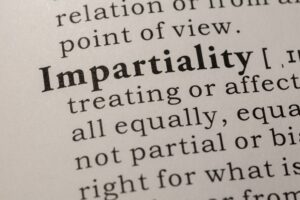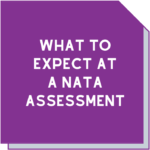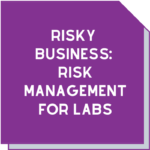Impartiality: passing the Pub Test
written by Maree Stuart
 If you’ve been keeping up with the news, you’ll have noticed quite a stir about the Federal Government’s program for funding of commuter carparks.
If you’ve been keeping up with the news, you’ll have noticed quite a stir about the Federal Government’s program for funding of commuter carparks.
Under the Urban Congestion Fund (UCF), established in the 2018–19 Budget, the Commonwealth sought to ‘support projects to remediate pinch points, improve traffic safety and increase network efficiency for commuter and freight movements in urban areas’. It included funding for 44 commuter car park projects to the tune of $660.4 million.
Sounds like a worthwhile program, doesn’t it? So why is it in the news? Why the outrage?
An audit by the Australian National Audit Office determined that “The department’s approach to identifying and selecting commuter car park projects for funding commitment was not appropriate. It was not designed to be open or transparent.”
It’s the last sentence which is troubling to many because this is where impartiality comes into play.
Now, you’re probably not in a Government Department making decisions of this kind. And your expenditure probably doesn’t approach this magnitude! But that doesn’t mean this example is not relevant to your everyday work.
We make decisions all the time about allocation of money, labour, time, and priorities. And sometimes we have to balance these conflicting factors. Impartiality is meant to be the guiding light in a morass of considerations.
What exactly is impartiality?
ISO/IEC 17025 defines it as ‘presence of objectivity’. This means that conflicts of interest do not exist, or you can resolve them without adverse impact on the lab’s activities.
Philosophy Professor John Cottingham wrote that impartiality is linked with making a moral decision, a view which suggests that we should only adopt a neutral standpoint, ‘detaching ourselves as far as possible from our own special desires and involvements’. He argues that that this view is unsustainable (despite it being the prevailing view since well before the 18th Century), and it can lead to perverse, repugnant outcomes.
Think about it. Is it right that a person who is totally detached from the lab’s clients is making decisions about the samples, testing or results? That could lead to a poor relationship with clients, an ill-informed judgement on the quality of the test results, or worse.
I think that impartiality embodies the idea of being able to justify your decisions to the often discussed, but rarely seen, ‘person in the pub’. This is someone just like you with the same background, expertise, and circumstances. In a similar vein as asking yourself, “Would my mother approve of this decision?” you can ask, “Would this pass the Pub Test?”.
So let’s unpack what’s required to make this a useful principle to have in place.
What does ISO/IEC 17025 require?
In essence ISO/IEC 17025 asks labs to do several things:
- Undertake lab activities impartially
- Structure and manage the lab to safeguard impartiality
- Not allow commercial, financial, and other pressures to compromise impartiality
- Identify and eliminate or minimise risks to impartiality.
So here’s what you really need to do:
- Set up your lab to minimise the possibility of conflict when people have to make those ‘irky’ decisions. Don’t have the person responsible for deciding on whether a product or service can be released be the same as the one in charge of ensuring it is made. But I get it; sometimes that’s not possible, especially in small organisations. So….
- Establish a review process. Transfer the decisions of approval or acceptance to another person in the organisation if at all possible. The chance of two people getting the decision wrong are smaller than if just one person makes these decisions. Lab QC and review of requests, contracts and reports are the perfect tools for this.
- Get a clear idea of the people in your lab. Understand the relationships that exist with others inside and outside of the lab. Consider governance relationships too. If you don’t know, ask, but don’t make it an interrogation. Perhaps a questionnaire can help. Remember to explain the reasons why you’re asking these questions. Find more tips in our previous article on How to ask good questions .
- Run the relationships through your risk management system to determine if there are any significant risks above your risk threshold. If there are, put things in place to either eliminate or mitigate these risks. Make sure you can demonstrate how you dealt with these risks to impartiality to an auditor.
- Lastly, think about the culture of your lab. Is it one where anything goes? Is it one where people feel able to disclose that feeling in the pit of their stomach when they feel uncomfortable? The latter, as opposed to the former, is what you should be aiming for. What can you do, as a lab manager or staff member, to encourage the right kind of culture? Can you demonstrate your organisation’s values in your everyday work? (Do you even know what these values are?) Can you use things like the quality policy, structure and content of any management and staff meetings to drive a culture where you can safeguard impartiality? If you can’t answer these questions to your satisfaction, then perhaps there is more work to do in the culture arena.
Of course, the above steps don’t mean that things won’t pop up from time to time that make you go ‘hmmmm’. Think about if your decisions, and those of your colleagues, would pass the pub test.
If you’re not sure or you want a second opinion, we can help!
Phone Maree on 0411 540 709 or email info@masmanagementsystems.com.au and request a confidential discussion.
Remember, you don’t have to do this alone!
Download the article Impartiality passing the pub test






